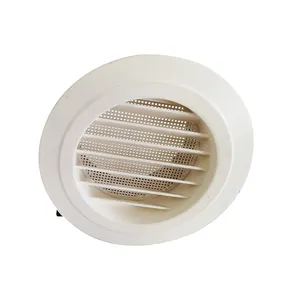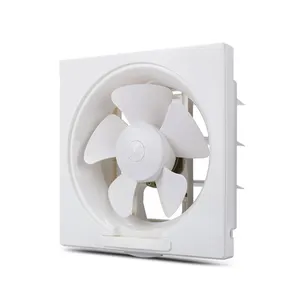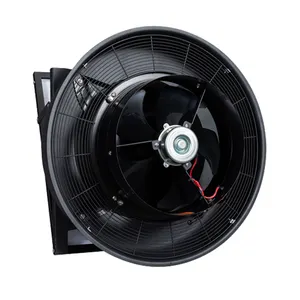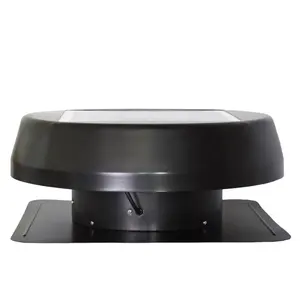Power roof vents, also known aspower attic vents or attic fans, are mechanical devices designed to enhance the ventilation of attics and roof spaces in a building. These roof vents are equipped with powered fans that actively move air, helping to regulate temperature and humidity levels in the attic.
Types of powered roof vents
According to different driving powers, there are several types of powered roof vents or attic fans.
Electric-powered attic fans are the most common powered roof vents. They use electric motors to drive the fan blades. They are typically installed on the roof or gable wall and are controlled by a thermostat that activates the fan when the attic temperature rises above a certain level. Some models also come with a humidistat to control moisture levels.
Solar-powered attic fans or solar attic fans are environmentally friendly. They use solar panels to generate the power needed to run the fan. Therefore, solar attic vents are ideal for locations with abundant sunlight. They often come with built-in thermostats that automatically activate the fan when the attic temperature reaches a certain level, which ensures that the ventilation system operates when needed without requiring manual intervention.
Wind-powered attic fans, also known as turbine vents or whirlybirds, harness the power of the wind to drive the fan blades. As the wind blows, it spins the fan, creating a low-pressure area that helps draw hot air out of the attic. Like solar attic fans, wind-powered fans also don't require electricity, making them another energy-efficient option.
The advantages of powered roof vents
Proper attic ventilation helps regulate temperature and moisture, which can contribute to a healthier roofing system. Attics can become extremely hot in hot climates, leading to increased temperatures inside the living spaces below. Powered roof vents help expel hot air from the attic, reducing the overall temperature and easing the burden on the cooling system. Also, adequate ventilation is essential for preventing moisture buildup in the attic. Moisture can lead to issues such as mold growth, wood rot, and damage to insulation. Powered roof vents help remove excess moisture, promoting a drier and healthier attic environment.
Solar attic vents operate using solar power, harnessing energy from the sun to run the fan. Thus, they don't rely on electricity from the grid, leading to lower energy consumption and reduced utility bills. Solar attic vents may extend the lifespan of roofing materials by reducing the risk of heat-related damage and moisture-related issues.










































 浙公网安备 33010002000092号
浙公网安备 33010002000092号 浙B2-20120091-4
浙B2-20120091-4